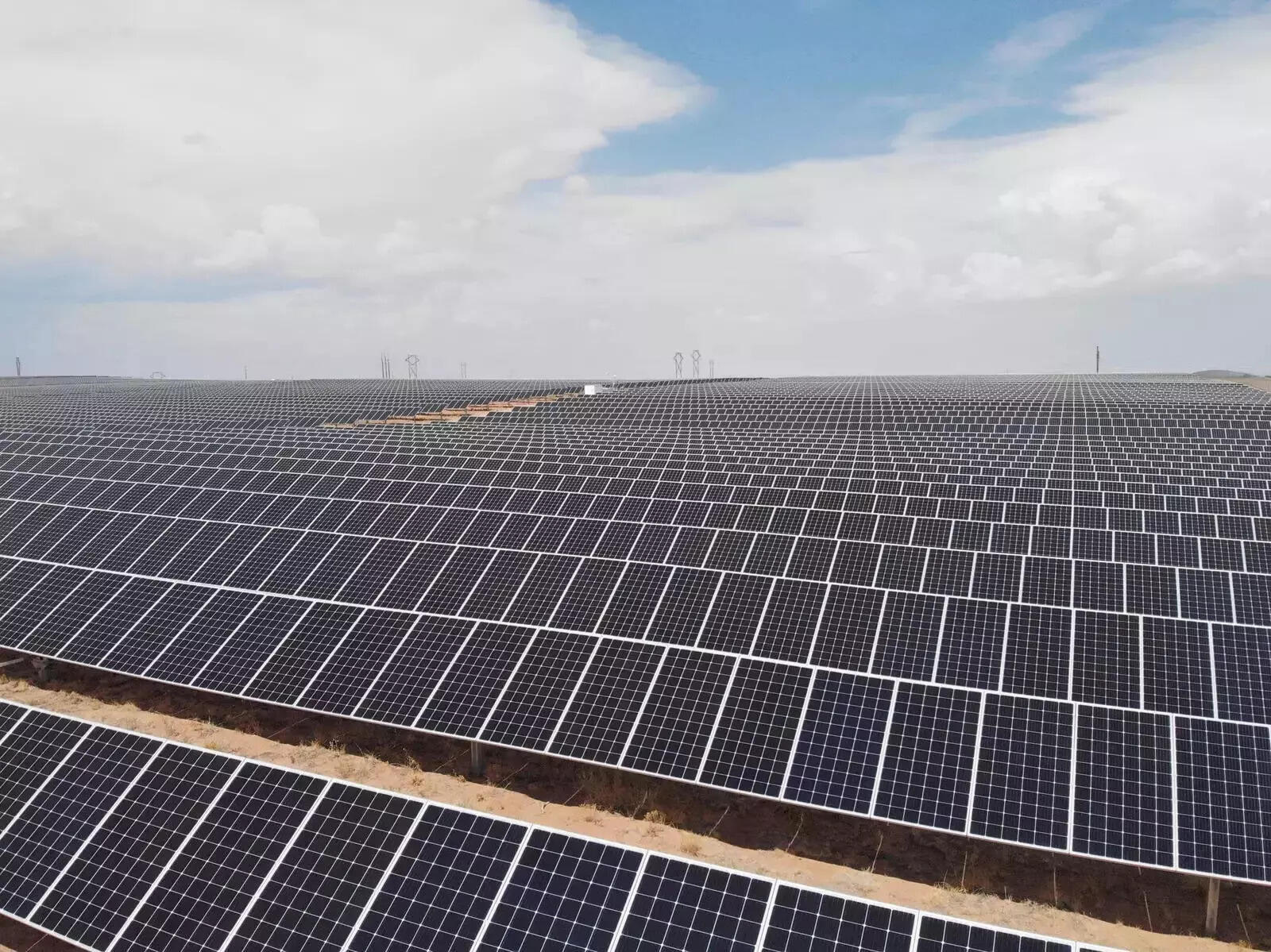
While Gujarat takes the lead in rooftop solar installations on homes as part of India’s strides towards clean energy, industrial units are also increasingly turning to solar and other sources of renewable energy for their captive consumption.
Favourable policies, incentives, cost savings and abundant solar resources are the key forces enabling investment in this sector in Gujarat. The state is witnessing significant growth in solar energy use by industries such as textiles, chemicals and engineering.
While Surat-based specialty chemicals major Anupam Rasayan Limited has a significant 20MW of captive solar power generation capacity, the trend is also seen among micro, small and medium enterprises (MSMEs).
Omax Cotspin Private Limited, which runs a spinning mill in Surendranagar, has set up a wind and solar power generation hybrid project with 3. 4MW of solar capacity. “Our annual electricity consumption is about 4. 50 crore units. We started solar power generation at the end of March and hope to get 50 lakh units through it. We have invested Rs 16. 50 crore in solar power and are in the process of setting up another 8MW solar unit. This will help us reduce our electricity costs significantly,” said company director Jayesh Patel.
According to data from the Gujarat Energy Development Agency (GEDA), solar rooftop installation by industry has grown manyfold in the last five years, going from 39. 27MW in 2018 to 517. 67MW in 2023.
Industry players say a major shift has been seen since the Covid pandemic began. “Solar rooftop installations became a necessary aid for industries, particularly MSMEs, which were facing the heat of low margins due to reduced demand. This is because power costs fell by 70% or more for many MSMEs,” said a source in the power sector.
Gujarat has witnessed the establishment of several largescale solar installations, including standalone solar power plants and rooftop solar systems, state government sources said. Industries such as manufacturing, textiles, chemicals, and pharmaceuticals have adopted solar energy to meet electricity needs and reduce dependence on traditional energy sources.
Kadi-based Pashupati Group has installed rooftop and groundmounted solar modules. Saurin Parikh, chairman of the company, said, “We installed 2. 7MW of rooftop solar panels about five years ago at a cost of Rs 9 crore, which generates 35 lakh units a year. Our annual electricity requirement is about 4 crore units. We recently started ground mounted solar as well, of 7. 5MW capacity. We expect to generate around 1. 15 crore units annually. We invested Rs 32 crore in the ground-mounted solar project. ”
Savings, infrastructure driving adoption
Commercial considerations are key drivers of solar adoption by industry. “As technology matures, the cost of power generation is falling. Moreover, while there has been a greater degree of volatility in the prices of coal and gas, solar adoption will stabilize power costs and cut down the cost of operation,” a power sector source said.
At a time when industrial units are reeling from inflation with the prices of raw materials rising across sectors, solar adoption helps bring down power costs.
The pharma sector has also seen aggressive solar installation. Shrenik Shah, MD of Himmatnagarbased Montage Laboratories Pvt Ltd, said, “We have installed 290kW of rooftop solar capacity at our factory in Himmatnagar. Of this, 250kW was set up around two years ago at a cost of Rs 90 lakh. This enables us to save Rs 3.50 lakh every month. We intend to set up another 250kW solar unit at our factory in a year.”Shah, who is president of Indian Drug Manufacturers Association (IDMA) Gujarat, said, “Many pharma players are adopting solar because the cost of electricity is increasing due to regulatory requirements for heating, ventilation and air-conditioning. Solar is helping companies save on energy costs. Most new plants have solar power generation capacity, because pharma factories typically have terraces where it is easier to install rooftop solar systems.”
Gujarat has reached record-low solar capacity costs, making solar power viable for industries, according to government sources. This has also encouraged companies to adopt solar energy and make the switch to cleaner power. The readily available infrastructure is another aspect that helps industry in this regard. “Gujarat was one of the early movers in integrating solar power to its existing grid. Net metering policies allow units to sell surplus solar energy back to the grid, to offset their electricity bills and reduce costs,” an industry source said.
State takes lead in solar adoption by industry
India reported its highest solar capacity installation in 2022, when it added 13GW. Gujarat has taken the lead in this capacity addition, driven by industrial, residential and commercial consumption. Solar power adoption by industry in Gujarat has been significant in recent years. The state has consequently emerged as a leader in terms of solar energy generation and utilization.
Top sources in the state government said Gujarat is geographically well-suited for solar power the year. “The state gets high levels of solar radiation, which is ideal for harnessing solar energy. Moreover, policies and incentives of the government are encouraging industry to invest in solar energy. The state offers favourable tariffs, tax benefits, subsidies and easy clearances,” the source said. dedicated industrial zones that provide the requisite infrastructure for industry to set up solar power projects. The Charanka, Dholera and Raghanesda solar parks have attracted significant investments from industrial players.

